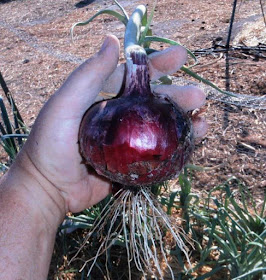Q.
Every year my grapes on my Thompson seedless grape vine are small, about the
size of a large pea. The taste is wonderful but I would like to get the berries
larger. I understand that grape growers use a chemical to make them larger but
I would rather not use chemicals if I don’t have to.
A.
Getting better berry size on grapes means you have to reduce the number of
total berries on the vine. The berries are small because there are too many
berries for the size of the plant.
The first step is to reduce the
total number of grape clusters on the vine. Grape clusters are produced on last
year’s growth. If you look at your vine, you will see that last year’s growth
will be a lighter brown, or sometimes a reddish brown, compared to older growth.
Once last year’s growth has been
identified, then it must be cut back to reduce the total number of bunches the
vine has to produce. If the grape is trellised, it is much easier to see where
to cut. If the grape is left sprawling, then it is more difficult.
On a trellised vine, we normally want
last year’s growth about 12 inches apart. If you haven’t finished your grape
pruning, you still have time. You should be finished before you see new leaves
emerge.
There are two ways of pruning
grapes; spur pruning and cane pruning. Spurs are created by cutting back last
year’s growth so that only one or two buds remain. This means last year’s growth
is reduced to an inch or less in length.
This type of pruning, spur pruning, is
done to most grapes. However, if you spur prune a Thompson seedless grapevine, it
is very possible you may lose most of your fruit. This is because the first ten
buds or so on last year’s growth will not produce grape bunches. They are
fruitless. In Thompson seedless, spur pruning cuts off buds that produce grape
bunches.
Thompson seedless, along with Black
Monukka, should be cane pruned, not spur pruned. Canes are just extra-long
spurs. Where spurs are pruned so that only an inch or less of new growth
remains (one to two buds), canes are pruned long enough so that you have ten to
twelve buds remaining on this super long spur.
This “extra long spur” is no longer
called a spur anymore. It is now called a “cane” due to its length. Once the
grape plant begins to flower in the next couple of weeks, you must then reduce
the total number of grape bunches. This is called “balancing the fruit load”. Balancing
the fruit load really means reducing the total number of grape berries so that
the leaves can produce enough sugar and energy to make the berries that remain,
larger.
The number of berries are reduced
primarily by two methods; reducing the total number of grape bunches and
reducing the size of the bunches. When the berries are very small, the size of
a BB, bunches are removed so that the remaining bunches are large and spaced
about ten or 12 inches apart.

+compressed.jpg)







+compressed.jpg)
.JPG)


